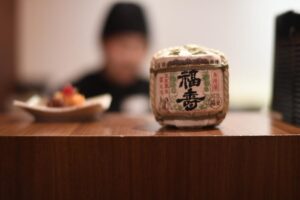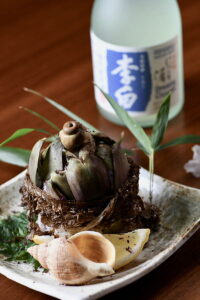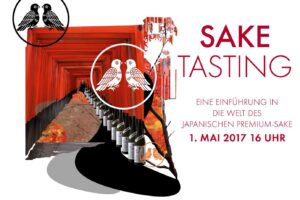Honjōzō & Tokubetsu Honjōzō
Japanese sake comes in a wide variety of price ranges and quality levels. To distinguish the qualities it helps to look at these Sake categories to know. Honjōzō means "genuinely brewed" and is one of the two lower premium sake types.
What criteria must a Honjōzō sake meet?
In Honjōzō (本醸造), the addition of alcohol is allowed up to 10% of the rice weight. Compared to, for example, Junmai brewed without added alcohol, the Honjōzō method seems less genuine.
The name is better explained knowing that the "real" serves to distinguish it from non-premium sake.
The purpose of this brewing alcohol, added before pressing from the mash, is to release flavors from the rice particles. This helps to express the aroma and makes the sake both more fragrant and lighter, milder and easy to drink.
The prescribed minimum degree of polishing of the rice used is 70 %. That is, 30 % of the rice grain must be polished away.
What does Honjōzō sake taste like?
The brewing alcohol itself is dry, so the finished sake also has a dry taste.
The appeal of Honjozō is its refreshing aftertaste while still enhancing the flavor of the rice. It is the perfect sake for everyday use. As a food companion, it is also an all-rounder, but goes particularly well with fish and seafood.
In general, Honjōzō is best served cold at 6 - 8 °C or at room temperature around 20 °C. At 6 - 8 °C it is more crisp and refreshing and offers the clean, pure taste.
Honjōzō is also a good choice if you want to drink sake that can be served very hot (above 50 °C). It does not lose much of its aroma and flavor even when served hot.
Whether you drink it cold or hot, it is best to drink it in a small porcelain or ceramic drinking vessel so that the temperature can be maintained.
What criteria must a Tokubetsu Honjōzō sake meet?
With Honjōzō, as with Tokubetsu Junmai, the label will say "Tokubetsu Honjōzō" (特別本醸造) if it has been brewed in a special way. So a Tokubetsu Honjōzō is a higher quality Honjōzō sake where the brewery has gone to more trouble or used a special material.
However, there is no clear definition of what this particular brewing process is, and it is left to the discretion of each brewery.
Typical examples are "long fermentation at low temperatures" (長期低温発酵) or "pressing with a wooden tool".
Special brewing methods are also recognized when only organic rice is used, or when 100 % sake rice such as Yamadanishiki is used.
To be called Tokubetsu Honjōzō, the label must show why it is "special". If you look at the label (and can read it...), you can see what the brewery did to make it special, and it can help you choose the right sake.
Sharing pleasure in Japanese
SUSHIYA is passionate about Japanese cuisine and culture. In our restaurant sansaro you can encounter the fascinating Japanese cuisine or have it delivered to your home. On our homepage, Facebook and Instragram we always give insights into news and interesting topics.

Review Sake Tasting November 1, 2018 - a great event!
Our sake tasting on November 1, 2018 was a great success! Not entirely without pride we have noticed that our Tasting

Sake Tasting Event on May 5, 2019 at Restaurant sansaro
Our kitchen team is already busy preparing for the Sake Tasting at the restaurant sansaro in Munich on May 5, 2019

Sake - the Japanese wine - Sake Tasting in May 2017
Sake is the Japanese equivalent of Western wine made from grapes: a fine, aromatic drink brewed from rice. But while wine is about



